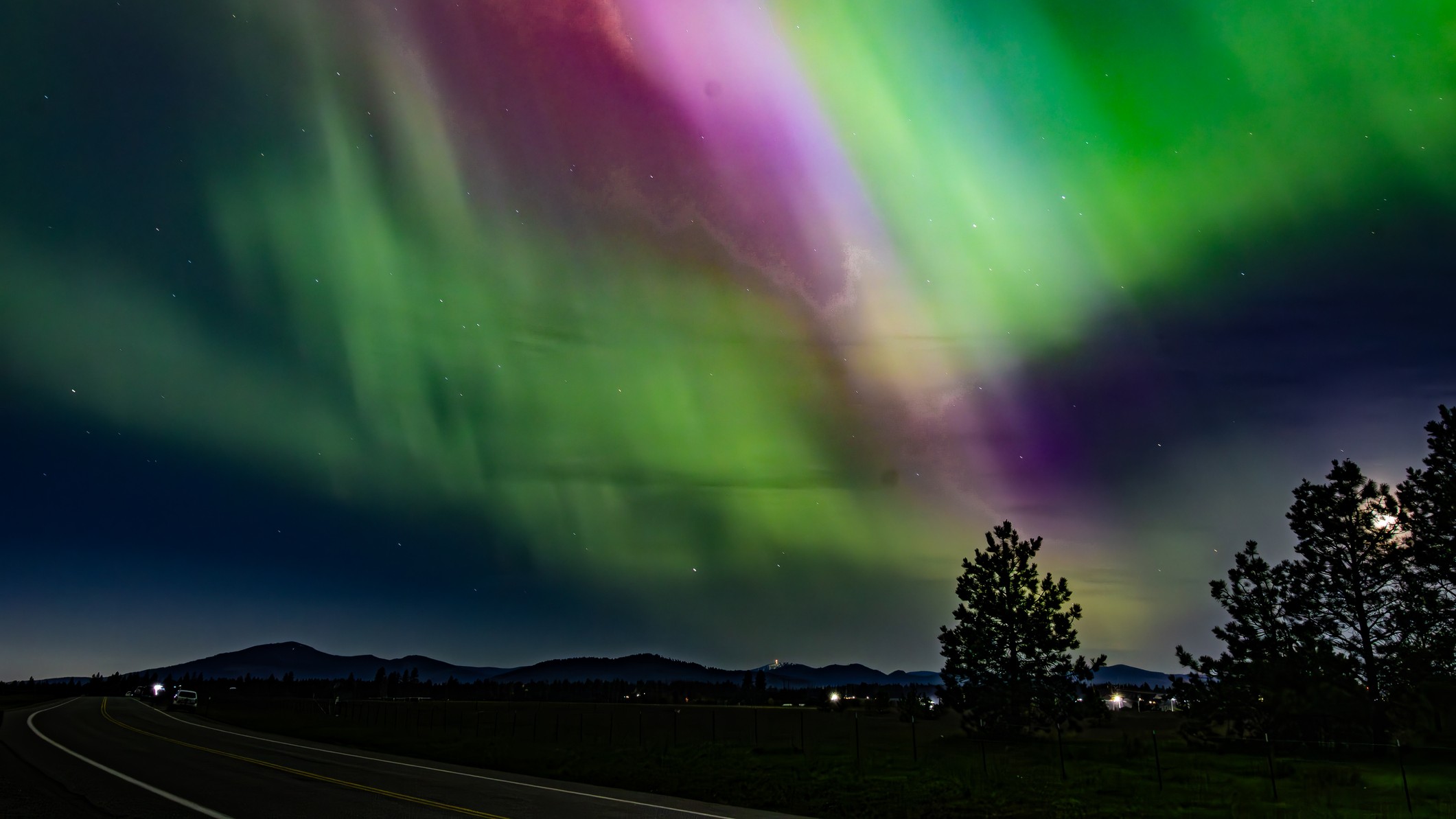The aurora borealis, commonly known as the northern lights, frequently makes an appearance in locations surrounding the Arctic Circle, illuminating the sky over places like Alaska, Canada, and Scandinavia. Nonetheless, when solar activity intensifies, these captivating spectacles may reach much farther towards the south. According to present forecasts, this particular storm might enable individuals living in sections of the central and possibly southern United States to observe the glowing green, pink, and purple lights normally associated with polar regions.
This unusual visibility is linked to an increase in solar activity, specifically a large release of charged particles from the Sun. When these particles collide with Earth’s magnetic field, they create the colorful glow we associate with auroras. The stronger the solar storm, the farther toward the equator these lights can travel. This upcoming storm ranks high on the geomagnetic scale, indicating the possibility of a widespread auroral display if skies remain clear.
The event’s cause is traced back to a coronal mass ejection (CME), which is an immense release of solar plasma and magnetic fields from the Sun’s surface. When these ejections head toward Earth, they have the potential to disturb both the atmosphere and essential technologies. Historical occurrences have demonstrated that severe geomagnetic storms can disrupt satellite communications, GPS networks, and even electrical infrastructure. Although experts do not expect this specific storm to cause disastrous harm, utility providers and satellite operators have been notified to implement preventive actions.
Experts at the National Oceanic and Atmospheric Administration (NOAA) have issued alerts to both amateur skywatchers and industry professionals. They advise that the peak time for auroral activity will likely occur within 24 to 48 hours of the CME’s arrival. Regions such as the Midwest, the Great Plains, and possibly parts of the southern states like Texas and Oklahoma could be treated to a rare celestial spectacle. For many people, this may be a once-in-a-lifetime opportunity to view the aurora without traveling thousands of miles north.
The optimal method to witness this spectacle is to venture out to a location far from the illumination of urban areas. The brightness from cities greatly diminishes the visibility of auroras, making countryside spots the best for unobstructed views. Viewers should gaze towards the northern skyline at night, especially close to midnight when the geomagnetic activity is usually at its highest. Being patient is essential, as the shows can fluctuate in strength and length based on atmospheric conditions and how the solar wind interacts with Earth’s magnetic field.
Auroras occur when electrons and protons from the Sun interact with oxygen and nitrogen in the upper atmosphere. These collisions produce bursts of energy that manifest as vibrant colors dancing across the sky. Green is the most common color, resulting from oxygen molecules about 60 miles above Earth, while red and purple tones appear at higher altitudes. This interplay of colors is not only a visual marvel but also a fascinating scientific process that highlights the delicate balance between solar forces and our planet’s magnetic shield.
While this event is generating excitement among stargazers, it also underscores the importance of space weather monitoring. Scientists track solar storms because of their potential to disrupt critical infrastructure. In 1989, a major geomagnetic storm caused a nine-hour power outage in Quebec, leaving millions without electricity. Although today’s power grids and technology systems are more resilient, the growing reliance on satellites for communication and navigation makes modern society particularly vulnerable to space weather.
In addition to power disruptions, solar storms can pose risks to astronauts aboard the International Space Station. High-energy particles can increase radiation exposure, prompting NASA and other space agencies to issue protective protocols during severe events. Airlines flying polar routes may also adjust flight paths to minimize exposure and avoid communication issues. These precautions illustrate how interconnected our technological systems are with the activity of the Sun, even though it is nearly 93 million miles away.
For photographers and astronomy enthusiasts, this storm represents a golden opportunity to capture breathtaking images of the night sky. Social media is already buzzing with anticipation, as users plan trips to dark-sky locations to document the event. Experts recommend using cameras with manual settings and long exposures to photograph the aurora effectively. Tripods and wide-angle lenses can help produce sharp, dramatic shots of the glowing horizon. For those unable to travel, live streams and community-shared photos will likely circulate widely online in the aftermath of the storm.
Looking ahead, scientists expect solar activity to continue increasing over the next few years as the Sun approaches the peak of its current solar cycle. This means similar events could become more frequent, though not every solar storm will produce auroras visible so far south. For now, this particular geomagnetic storm stands out as one of the most significant in recent memory, offering both beauty and a reminder of our planet’s vulnerability to solar forces.
As the storm approaches, experts urge the public to remain informed through official channels such as NOAA’s Space Weather Prediction Center. These agencies provide real-time updates on geomagnetic conditions, aurora forecasts, and potential impacts on technology. For those fortunate enough to witness the northern lights during this rare occurrence, it will serve as a stunning example of nature’s power and elegance—a cosmic performance unfolding high above our heads.
From a scientific standpoint, solar storms provide important insights into the connection between the Sun and Earth, assisting scientists in improving forecasting models. Comprehending the formation and expansion of these storms is vital for protecting infrastructure and planning upcoming space explorations. Every occurrence adds to an expanding collection of knowledge that helps society be more equipped for the next significant solar eruption.
When conditions are favorable, the skies over vast areas of the United States might light up with shades of green and red, enchanting millions and reminding us of our role in the immense solar system. This phenomenon is not just a treat for the eyes but an experience that brings people together, encouraging them to step outside and witness nature’s incredible light display.




